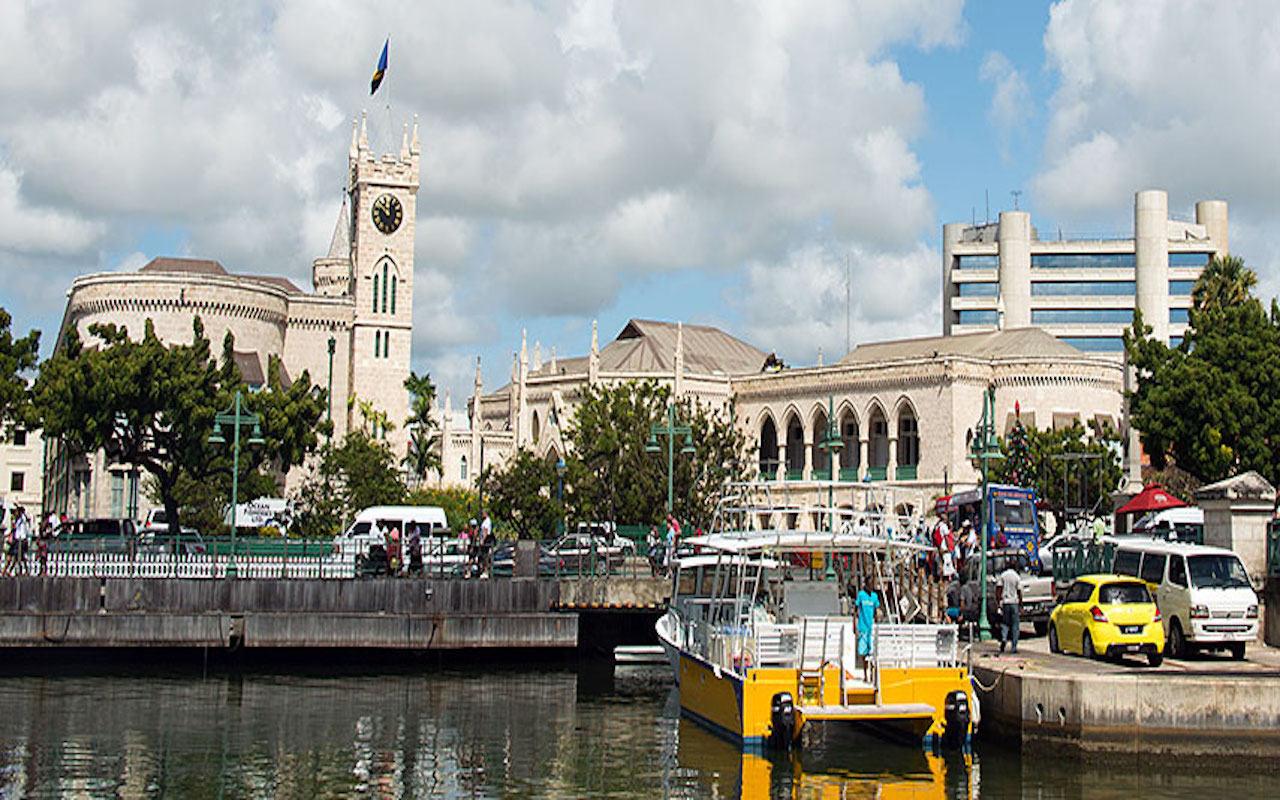It is a sobering but vitally important issue facing the entire nation.
Our capital city, nearly 400 years old, is dying.
This is no hyperbole. The exodus from The City of Bridgetown of businesses and consumers following on the four-decades-long flight of residents has left Bridgetown nearly hollowed out.
Urban blight, once restricted to fringe districts, has now crept around the heart of our capital.
Where once cars populated a car park, people crowd into Independence Square to sleep rough. Across the street, marquee businesses have vacated once-iconic addresses – Sunjet House and Speedbird House.
A square in which history was made, an Independence Arch was erected – twice – the Supremes appeared at the birth of a nation and a father of Independence asked what mirror image did we have of ourselves, is by day a picturesque spot where the statue of the Right Excellent Errol Walton Barrow overlooks a grim nightly visage of dislocated and hopeless people with no home of their own.
Elsewhere in The City, buildings are shuttered, crime and social ills spread, and the lifeblood of our ancient and historic capital ebbs into the gutter.
Like a house divided unto itself, our nation cannot grow and thrive with a dead capital. This has been recognised for the last 40 years. Member of Parliament for the City Dame Billie Miller, a Bridgetown native who grew up in a changing city, envisioned a capital as magnet for city-dwellers, arts and entertainment.
Plans were drawn up for malls – the kind in which streets are closed to vehicular traffic. Improvements in pedestrian access were proposed. Trees were set for a comeback. Lighting would brighten.
Indeed, change did come in a sporadic, piecemeal way. Trevor’s Way was developed. Swan Street became a mall. New street lamps were installed in Baxter’s Road. The old Wharf Road and dockside were transformed into the Lewis-Wickham Boardwalk. Trafalgar Square became Heroes Square. And Constitution River was canalised. London Bourne Towers were built. Some green returned to the Lower Green with the recreation of a square around Jubilee Gardens. Pelican Village got a much-needed facelift.
Yet, all the while the abandoned Empire theatre, once a cultural hub that could rise again, crumpled under the weight of successive administration’s promises. Marshall Hall burned to the ground. Shoppers continued to shun the congestion, poor parking and limited commercial choice – except for tourists seeking duty-free shopping. Queen’s Park Theatre went dark. Stores closed forever.
This hodge-podge approach to city planning is not new. The skyline of the city began to change even before Independence – as three temples financial were brought to life by ministers of finance. The Treasury Building dwarfed the iconic Public Buildings and monuments across the square in the 1960s. The National Insurance Building, doomed to the disdain of artists and architects, went up and up in the 1970s. Then the Central Bank building towered over 18th century edifices in the 1980s.
A city without dwellers, indeed without a reason to visit, congregate and socialise in, cannot long lay claim to attract either tourists or nationals to see the greatness and beauty of our nation concentrated in our tiny but ancient metropole.
So while the changes announced by the Prime Minister attempt to establish a hotel and residences in the capital for the first time since the Trafalgar Hotel died half-century ago, together with repurposing of the Fire Service headquarters, the old NIS building and the Treasury Building suggest yet another shift in our national skyline, we need to set our sights not on the sky but on the ground.
In come a group of young University of the West Indies with a plan and a purpose. And lots of great ideas.
They have proposed a makeover of cultural and heritage attractions in Bridgetown and Oistins in a bid to attract more people and boost tourist spending.
They recommended five “core strategies” to drive tourism development: collaboration and partnership, development of Bridgetown, expanding the visitor experience, marketing and targeting of new markets, and continuous research.
The students also recommended the formulation of a task force and annual measurement to determine the improvements’ economic and social impact.
The students said they see the potential for more visitors, more involved residents, economic opportunities, and growth of the local heritage and culinary tourism niche.
The students in the tourism master’s degree programmes at the UWI at Cave Hill proposed a ten-year “strategic plan” involving the setting up of a “multi-stakeholder” group.
Under the proposed plan, the students said old buildings would be restored, starting with those of historical significance; seating areas would be enhanced; the aesthetics of the town would be improved “along a folklore/heritage line”; and interactive signage would increase, as would security presence and CCTV surveillance cameras.
The students suggested that the development funds come mainly from Government, supported by private sector and international business stakeholders.
Among the areas recommended for immediate consideration are Trafalgar Square, Parliament Buildings, Independence Square, The Careenage, St Mary’s Anglican Church, Jubilee Gardens, National Heroes Square, the Chamberlain Bridge and Pelican Village.
The students suggested that Pelican Village become The City’s marquee attraction, which would be redeveloped as a cultural heritage, business and leisure (“bleisure”) tourism hub, an information centre for tourists, and a home base for walking and island tours.
The redeveloped location would see improved amenities, free wi-fi, ATM banking, solar photovoltaic systems, 24-hour security and classes being offered in the arts, special events being hosted different nights, and a daycare facility.
The plan includes the addition of an overhead footbridge to connect Pelican Village to Trevor’s Way and a lookout point.
The group is proposing that Trevor’s Way become a hangout spot, with improved lighting, and that a jetty be built there.
Another student group is suggesting that by redeveloping Oistins and marketing it as the place “where culinary meets culture”, the Government could rake in over $3.5 million in Value Added Tax (VAT).
“It is estimated that the income produced in the area would reach $20.4 million annually,” that group added.
This redevelopment would include a refurbished pier that would house a historical and fish museum and a restaurant.
Traffic to the area would then be through a ferry system and rerouted traffic, while there would be a park and ride system and meter and executive parking.
Our political and business leaders, who have made agreeable noises about involving young people in our economic transformation, could do worse than to listen to these bright young minds on the future of our capital and the growth of our nation.




